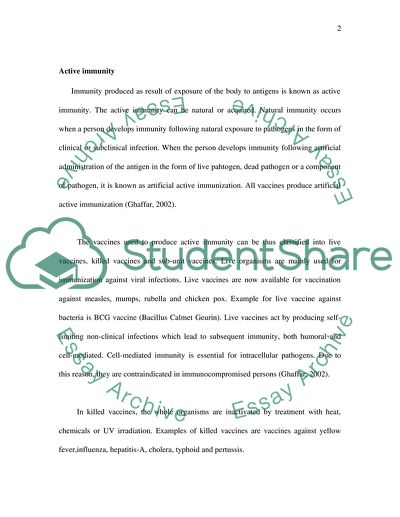Cite this document
(Passive and Active Immunity Essay Example | Topics and Well Written Essays - 1500 words, n.d.)
Passive and Active Immunity Essay Example | Topics and Well Written Essays - 1500 words. Retrieved from https://studentshare.org/biology/1713876-immunology-essay
Passive and Active Immunity Essay Example | Topics and Well Written Essays - 1500 words. Retrieved from https://studentshare.org/biology/1713876-immunology-essay
(Passive and Active Immunity Essay Example | Topics and Well Written Essays - 1500 Words)
Passive and Active Immunity Essay Example | Topics and Well Written Essays - 1500 Words. https://studentshare.org/biology/1713876-immunology-essay.
Passive and Active Immunity Essay Example | Topics and Well Written Essays - 1500 Words. https://studentshare.org/biology/1713876-immunology-essay.
“Passive and Active Immunity Essay Example | Topics and Well Written Essays - 1500 Words”, n.d. https://studentshare.org/biology/1713876-immunology-essay.


